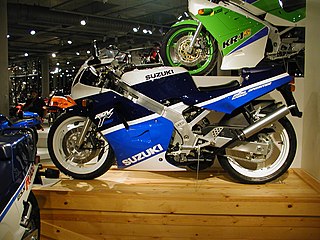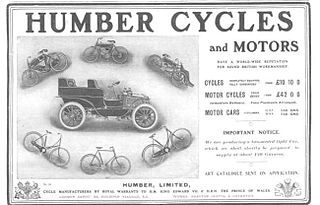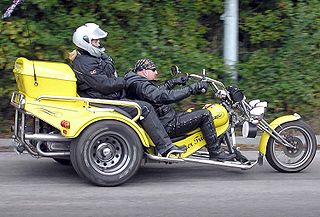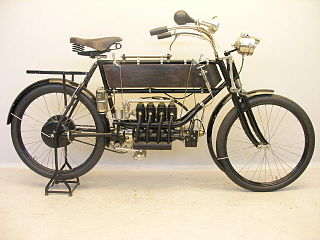
NSU Motorenwerke AG, or NSU, was a German manufacturer of automobiles, motorcycles and pedal cycles, founded in 1873. Acquired by Volkswagen Group in 1969, VW merged NSU with Auto Union, creating Audi NSU Auto Union AG, ultimately Audi. The name NSU originated as an abbreviation of "Neckarsulm", the city where NSU was located.

L'Aster, Aster, Ateliers de Construction Mecanique l'Aster, was a French manufacturer of automobiles and the leading supplier of engines to other manufacturers from the late 1890s until circa 1910/12. Although primarily known as an engine mass manufacturer the company also produced chassis for coach-works and a complete range of components.
The GM Ecotec engine, also known by its codename L850, is a family of all-aluminium inline-four engines, displacing between 1.4 and 2.5 litres. Confusingly, the Ecotec name was also applied to both the Buick V6 Engine when used in Holden Vehicles, as well as the final DOHC derivatives of the previous GM Family II engine; the architecture was substantially re-engineered for this new Ecotec application produced since 2000. This engine family replaced the GM Family II engine, the GM 122 engine, the Saab H engine, and the Quad 4 engine. It is manufactured in multiple locations, to include Spring Hill Manufacturing, in Spring Hill, Tennessee, with engine blocks and cylinder heads cast at Saginaw Metal Casting Operations in Saginaw, Michigan.

An evolution of the 1964 DOHC prototype “XJ13” engine, the Jaguar V12 engine is a family of SOHC internal combustion V12 engines with a common block design, that were mass-produced by Jaguar Cars for a quarter of a century, from 1971 to 1997, mostly as 5.3‑litres, but later also as 6‑litres, and 7‑litre versions that were deployed in racing. Except for a few low-volume exotic sports car makers, Jaguar's V12 engine was the world's first V12 engine in mass-production. For 17 years, Jaguar was the only company in the world consistently producing luxury four-door saloons with a V12 engine. The V12 powered all three series of the original Jaguar XJ luxury saloons, as well as its second generation XJ40 and X305 successors.

De Dion-Bouton was a French automobile manufacturer and railcar manufacturer, which operated from 1883 to 1953. The company was founded by the Marquis Jules-Albert de Dion, Georges Bouton, and Bouton's brother-in-law Charles Trépardoux.

Delage is a French luxury automobile and racecar company founded in 1905 by Louis Delâge in Levallois-Perret near Paris; it was acquired by Delahaye in 1935 and ceased operation in 1953.

The E-series was a line of inline four-cylinder automobile engines designed and built by Honda for use in their cars in the 1970s and 1980s. These engines were notable for the use of CVCC technology, introduced in the ED1 engine in the 1975 Civic, which met 1970s emissions standards without using a catalytic converter.

The Suzuki RGV250 was a Suzuki high performance sport bike which had a great number of its features and design cues based on Grand Prix technologies and ideas. It is a race-replica based on Suzuki's 250 cc (15 cu in) GP bikes from 1987 to 1998, the RGV V-2 racer. This motorcycle replaced the RG250 Gamma, which employed an alloy frame with a two-stroke parallel twin engine. The bike produced over 60 bhp in a narrow power band between 8,000 and 11,000 rpm. The dry weight ranged between 128 kg (282 lb) (1989) to 140 kg (309 lb) dry weight.

The Mitsubishi 3G8 engine is a range of three-cylinder powerplant from Mitsubishi Motors, introduced in the fifth generation of their Mitsubishi Minica kei car. In common with other contemporary engines in the class, it could be specified with many advanced technologies despite its diminutive size, including multi-valve cylinder heads and double overhead camshafts. The top-of-the-line Dangan ZZ variant was also the first kei car to benefit from turbocharging. In 1987 Mitsubishi was the first manufacturer to supercharge a kei vehicle, and in 1989 became the world's first production car to feature five valves per cylinder, ahead of similar developments by Bugatti, Audi, Ferrari and Toyota.

Ariel Motorcycles was a British maker of bicycles and then motorcycles in Bournbrook, Birmingham. It was an innovator in British motorcycling, part of the Ariel marque. The company was sold to BSA in 1951 but the brand survived until 1967. Influential Ariel designers included Val Page and Edward Turner. The last motorcycle-type vehicle to carry the Ariel name was a short-lived three-wheel tilting moped in 1970.

Humber Limited was a pioneering British motorcycle manufacturer. Humber produced the first practical motorcycle made in Britain by fitting one of their Humber bicycles with an E. J. Pennington two-horsepower motor in 1896.

Quadrant was one of the earliest British motorcycle manufacturers, established in Birmingham in 1901. Famous for their big singles, Quadrant pioneered many innovations that proved important for motorcycle development but struggled after the First World War and the company was wound up in 1928.

The NS motorcycle, made by Narazo Shimazu in 1909, was the first motorcycle to be designed, built and sold in Japan. Shimazu created the Nihon Motorcycle Company (NMC) to manufacture the NS. In 1926 he then produced another new motorcycle design, the Arrow First. The earliest motorcycle that the Society of Automotive Engineers of Japan(in Japanese) includes on its list of the 240 Landmarks of Japanese Automotive Technology is the 1909 NS.

A motorized tricycle, motor trike, or motortrycle is a three-wheeled vehicle based on the same technology as a bicycle or motorcycle, and powered by an electric motor, motorcycle, scooter or car engine.

The Auto-Bi was an early motorcycle made by the Thomas Motor Company in Buffalo, New York. According to many sources, it was the first motorcycle widely available for sale in the United States.
The Paris–Marseille–Paris race was the first competitive 'city to city' motor race originating in Paris, where the first car across the line was the winner, prior events having selected the winner by various forms of classification and judging. The race was won by Émile Mayade who completed the ten-day, 1,710 km, event over unsurfaced roads in 67 hours driving a Panhard et Levassor.

The FN Four was the world's first production inline-4 motorcycle, manufactured in Liége by Fabrique Nationale from 1905 until 1923. It was also, at 40 miles per hour (64 km/h), the world's fastest production motorcycle from 1911 until 1912.

The De Dion-Bouton 78 hp, typically referred to as De Dion-Bouton 80 hp, was an eight-cylinder, air cooled vee aircraft engine that has been built by De Dion-Bouton.

The De Dion-Bouton 130 hp aircraft engine, also referred to as De Dion-Bouton 12B, was a twelve-cylinder, air cooled vee aircraft engine that has been built by De Dion-Bouton.



















